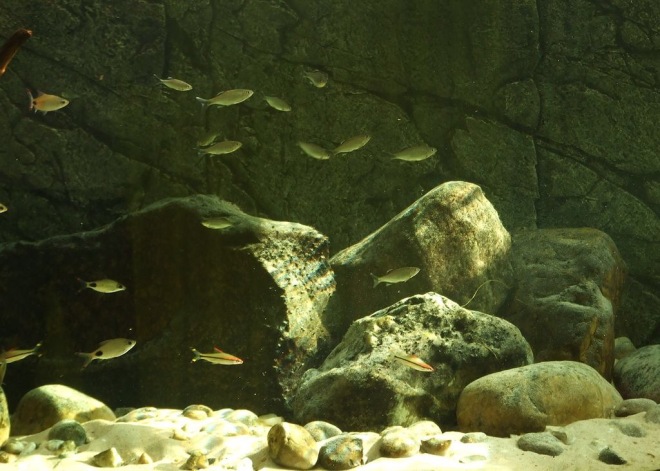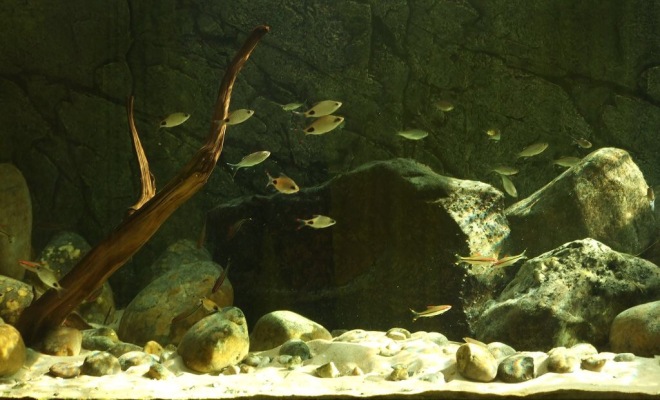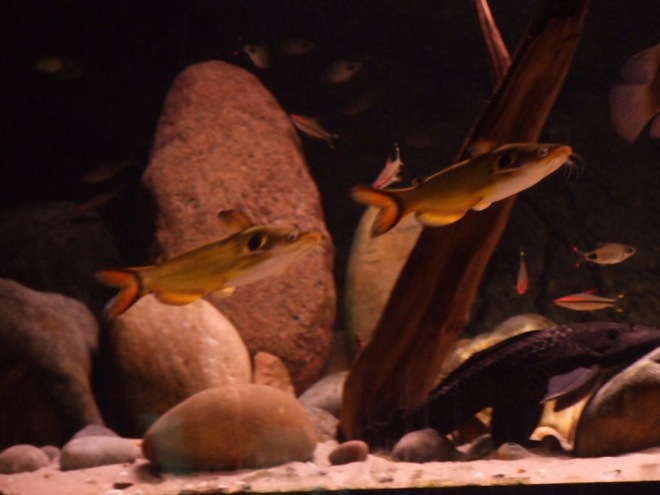The ‘nature aquarium’ school of aquascaping pioneered by Takashi Amano has swept the globe and undoubtedly revolutionised the aquarium hobby.
However, within Amano’s work you can distinguish two quote separate threads – an earlier style that attempted to recreate above water landscapes and a later trend towards recreating natural underwater habitats. It is the first of these that has come to dominate most of the big ‘aquascaping’ competitions. In recent years it has tended towards the naff, with sand waterfalls and floating islands mimicking scenes from ‘Avatar’. Some of the highest ranked efforts in recent competitions are horribly artificial and more akin to putting little plastic men or houses in terrariums or the model railway hobby, and just as artificial as putting sunken treasure or ship wrecks in our tanks. Iwagumi often head too far in this direction for my tastes.
I’d like to see a move towards aquascapes that look and feel like real underwater environments. There is no reason that we can’t combine this with the appreciation for healthy plant growth, aesthetic principles and better design of tanks (optiwhite, rimless) and equipment that the nature aquarium craze has encouraged. It would mean a smaller selection of species, less orderly arrangements and saying goodbye to the horrible little brown balls of clay that have been widely adopted as substrate (at least, not as a top layer).
I think this style is gaining some ground amongst aquascapers – at least in Europe: Seee for example some of the featured journals on the UKAPS forum. Perhaps we need to recognise it with a new name – naturalistic vs nature aquariums?













